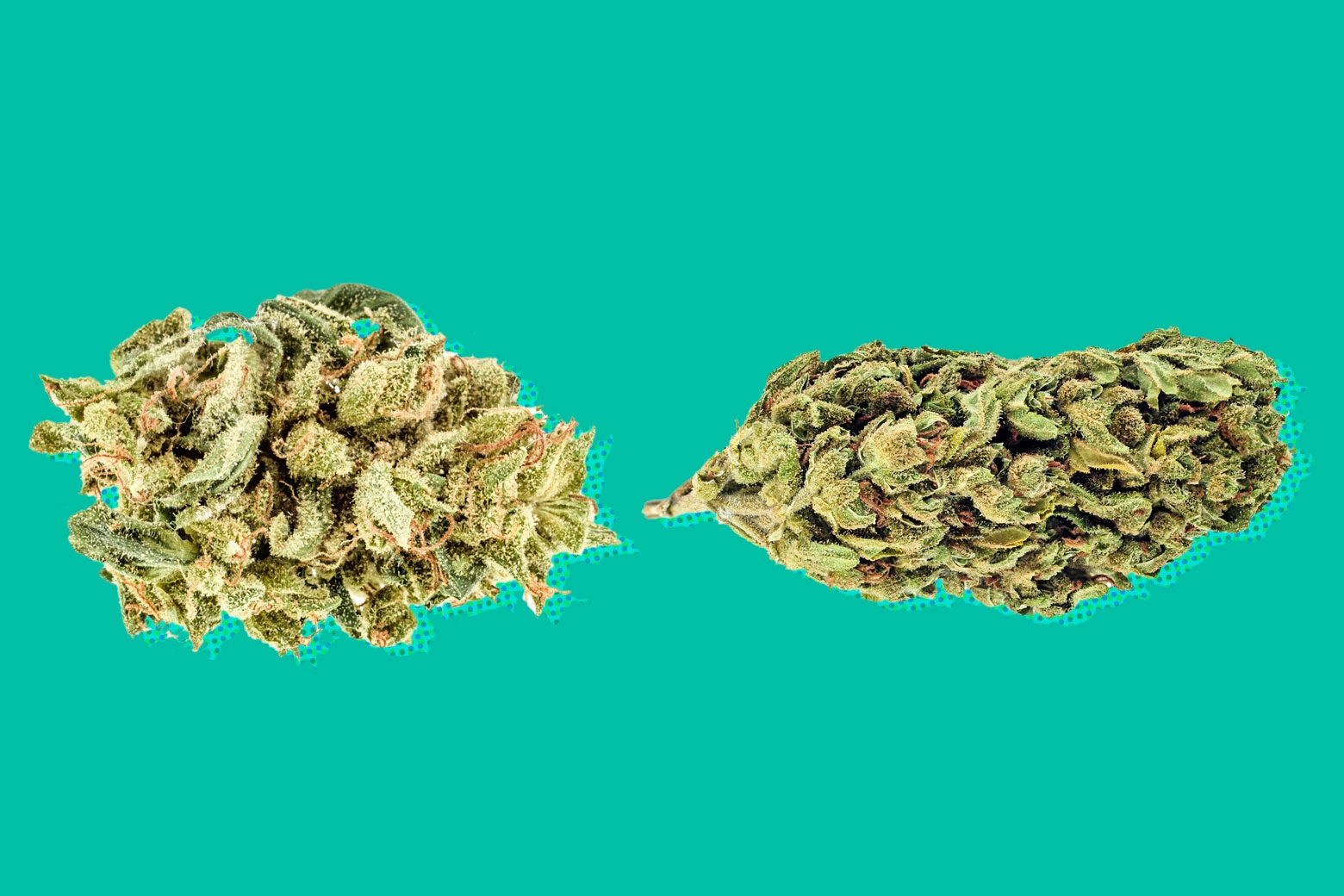You might have heard of Jean Baptiste Lamarck in an intro biology class. He proposed a version of evolution that, in hindsight, seems like the sort of thing a stoned teen would come up with. In the Lamarckian theory of evolution, changes in species occur not slowly over generational mutations, but within the lifetimes of individual animals. A horselike creature, for example, faced with tall trees with yummy leaves, could, with stretching and straining, make its neck longer to better reach them. Voila—the stubby creature is now a giraffe.
Lamarck also made a more direct contribution to stoner culture, though. As an essay in the modern journal Cannabinoids explains, it is to him that we owe the idea that weed comes in two distinct species: Cannabis sativa and Cannabis indica. Lamarck first described the second of these two strains in the late 1700s, noting that the latter was smaller, had a firm stem, and produced “a sort of drunkenness that makes one forget one’s sorrows, and produces a strong gaiety.”
So, in honor of 4/20, we had to ask: Does the Lamarckian weed classification hold up, or should it go the way of his stretchy-necked giraffe-horses?
His cannabis theory is certainly still widely deployed. Today, indica is colloquially linked to relaxation, sativa to a high with more energy. This college dorm trivia is how many weed pros think too—at least, those who sell and buy the stuff. At the Green Dragon dispensary in Colorado, you’ll find offerings categorized as indica, sativa, and hybrids. “If you’re anxious, if you haven’t tried weed in a long time, things leaning more indica are a better option,” Alex Levine, Green Dragon’s co-CEO, tells me. “People who get a little paranoid should stay away from sativas.”
For Levine, classifying weed strains is an art, not a science. The process is pretty simple: smoke or ingest the weed, observe if one feels more like sprawling out on the couch or coming up with wild theories about the way life works, apply a label accordingly. What he cares about is what his customers care about: that subjective end effect. “This feeels like indica, this feeels like sativa,” he says of the process. Stoner taxonomy, if you will.
“There are botanists rolling in their graves,” says Sean Myles, when I ask him about this methodology. He’s a researcher at Dalhousie University who studies agricultural diversity, including that of marijuana. For him and other weed scientists, Levine’s classification system represents a gross misuse of labels that are supposed to mean something specific. For a study published in 2015, he collected 81 samples of weed from various distributors—categorized, of course, in terms of indica and sativa. His team sequenced the genomes of the pot and found that the labels didn’t correspond with meaningful genetic differences—which, to him, is kind of upsettingly out of step with other consumable products. “We can’t write on the bottle that it’s pinot noir and shove whatever grapes in the bottle.”
All four weed scientists I spoke to had slightly different answers on whether two separate species existed and were muddied through crossbreeding, or the differences that some people claim to observe were always just part of the spectrum of forms that a single species of cannabis plants can take on. “We can’t really know,” says Robert LaPrairie, a researcher at the University of Saskatchewan who studies how cannabis affects the brain. He joked, “The time machine that I was working on failed miserably.”
What they did agree on is that indica and sativa are now just marketing jargon—like Lamarck’s stretchy-necked giraffes, at this point a fable. When I press Levine on this, he’s at once in agreement that the labels aren’t as firm as they might seem on his company’s site—“people kind of overhype the differences,” he says, referring to getting a different feeling from one shape of plant or another—and insistent that there is a difference in experience—“anecdotally, I can attest that they feel very different,” he says, referring to the actual variations of experiences of smoking the weed. In his world, indica and sativa have left behind their 18th-century scientific meanings and become stand-ins for different types of subjective experiences.
It is true that different varieties (scientists do not like when you call them strains!) of weed can produce different effects, which vary based on the combinations of chemicals in the plant—including THC, CBD, and more than a hundred other cannabinoids, plus an array of aromatic terpenoids. These chemicals evolved in cannabis—which is older than the human species itself—to ward off insects and disease in the plants, says Ethan Russo, director of research and development at the International Cannabis and Cannabinoids Institute. Today, we’re just beginning to understand how these chemicals can produce in humans the feeling of wanting to clean the garage or veg out on the couch. In Russo’s ideal world, dispensaries would categorize their offerings by these chemicals, along with subjective feedback from users—a kind of giant master binder on the origins of the various kinds of highs. But for now, “indica” and “sativa” are still the most widely understood classifications of all.
